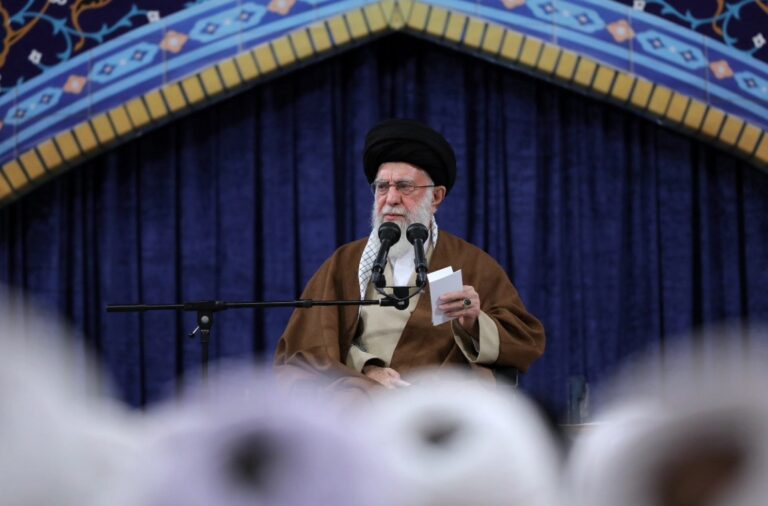Ali Khamenei, the Supreme Leader of Iran, holds pivotal roles in the country’s political and religious spheres, exerting significant influence over governance and policies marked by conservatism and authoritarianism.
Table of Contents
Ali Khamenei, background and rise to power
Born in 1939 in Mashhad, Khamenei began his religious studies at an early age, eventually becoming involved in the Islamic Revolution of 1979.
He played essential roles within the revolutionary government and was elected President of Iran in 1981, becoming the first cleric to hold this office.
Following Ayatollah Khomeini’s death in 1989, Khamenei was controversially appointed as Supreme Leader. Thus consolidating his authority over Iran’s political and religious institutions.
Consolidation of authority
Since assuming the role of Supreme Leader, Khamenei has pursued conservative policies aimed at preserving Iran’s revolutionary ideals and Islamic principles.
He has consistently opposed Western influence and engagement, advocating for self-reliance and resistance against perceived foreign interference.
Khamenei’s leadership is characterized by a firm stance against dissent and political opposition. Thus with policies that restrict freedom of expression and impose strict social and religious codes.
Read also: Conflict in the Gaza Strip, who supports Israel and who Hamas? The major funders of the war
Political stances and policies
Khamenei’s tenure has been defined by his unwavering support for Iran’s conservative establishment. He has overseen policies that prioritize Islamic values and the preservation of theocratic governance.
Khamenei’s anti-Western rhetoric reflects his commitment to Iran’s independence and sovereignty, often emphasizing resistance against Western powers and Israel.
His administration has implemented strict controls over media, education, and cultural institutions to uphold ideological purity and societal conformity.
Despite his prolonged tenure, Khamenei faces challenges, including health concerns and speculation about his succession. His rule has been marked by controversies, particularly regarding human rights violations and crackdowns on dissent.
The 2009 Green Movement protests, which Khamenei endorsed a harsh response to, underscored the deep-seated societal divisions within Iran under his leadership.
Legacy and future
Ali Khamenei’s legacy is intertwined with Iran’s trajectory as a theocratic state. His leadership has shaped Iran’s domestic and foreign policies, steering the country towards a conservative and authoritarian path.
As Iran navigates internal and external pressures, questions arise about the continuity of Khamenei’s ideological legacy and the future direction of the country post-Khamenei era.
The succession process will likely determine Iran’s political landscape and its stance on key domestic and international issues in the years to come.
Read also: The war between Iran and Israel shakes the world: what are the positions of other countries












